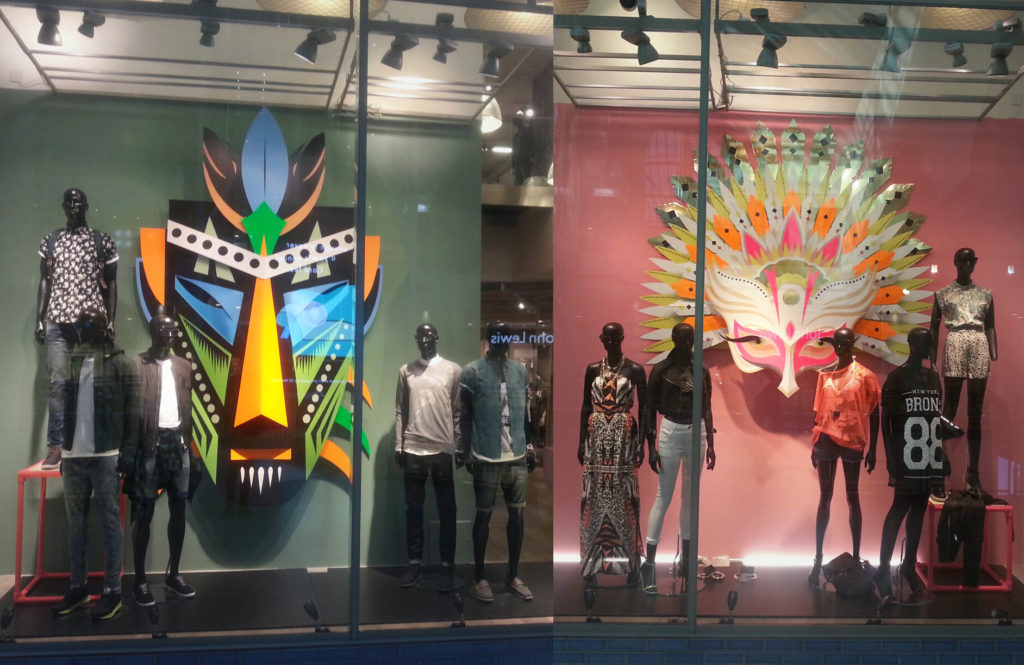THE ROLE VISUAL MERCHANDISING PLAYS IN DRIVING SALES
Effective visual merchandising is one of the most important elements to creating a retail environment which is both enticing and memorable for the consumer. When we talk about “visual merchandising” this is everything from the window display a prospective customer first sees that draws them to the store, to the signage and POS displays that guide them through their in-store journey and eventually encourages their purchasing decisions. As David Ballard, Creative Director at Lick Creative, highlighted recently: it’s all about standing out from the competition by using a strategic approach to catch their eye, ultimately influencing them to purchase something by giving them what they want!
Our friends over at IGD looked into the true impact of merchandising in larger format stores:
- Two-thirds of shoppers are influenced by merchandising when visiting a large store
According to IGD’s research over 60% of shoppers are influenced by merchandising. However with so much communication in-store it can be hard to stand out. To maximise the chances of shoppers picking up a product that they had not planned to, merchandising in larger stores needs to be eye-catching, simple, engaging and relevant.
Successful merchandising should reflect the needs and behaviour of shoppers in that area of store and the time of year.
- Gondola ends and in-store signage play an important role in highlighting special offers for shoppers, and therefore influencing their purchasing decisions
Out of aisle displays play a crucial role in increasing category conversion and unplanned purchasing, especially in categories that are less frequently purchased. Shoppers may not go down every aisle on every trip, especially if they are on a specific shopping mission. Displays help to increase awareness and therefore consideration of certain categories and products.
Consider where the most relevant part of the shopper journey is for you to influence shoppers with your brand. Where are you likely to have the greatest impact in-store?
Gondola ends are essential if you are looking to maximise promotional sales.
- Gondola ends are associated with promotions
Promotional strategies should result in a change in shopper behaviour. It is therefore vital that brands and retailers understand the shopper behaviour that is being targeted – for example, deep price reductions are more likely to encourage impulse category purchasing and can be effective at driving trial of new products whereas “multi-buys” are more likely to drive basket size.
Shoppers often struggle to determine if special offers are good value and so providing both the promoted price and the savings made may increase appeal.
- Dual sightings are important to drive trial of new products
In larger stores raising awareness of new products is more of a challenge, as there are more products and multiple messages being communicated at the shelf. An effective approach to tackling this is to maximise sales at launch by locating the product on a display outside of the aisle.
In-store communication of new products needs to clearly highlight the key product features and benefits and give shoppers a reason to try – for example if a food product provides additional health benefits (particular during seasonal periods where diets are being reconsidered, like after Christmas or in the run-up to Summer).
- Certain merchandising has less impact
It is important that you are clear on the role of different types of merchandising and that you continually monitor the return on investment of any in-store activity.
The following questions should be considered before determining the most effective type of merchandising for the brand:
- What shopper behaviour are you trying to drive?
- Which types of shoppers are you targeting?
- Which type of shopping mission or occasion does your product appeal to?
- What is the main message that you want to communicate to shoppers?
Location in-store, time of year, store location and store layout will all impact the effectiveness of different types of in-store merchandising.




